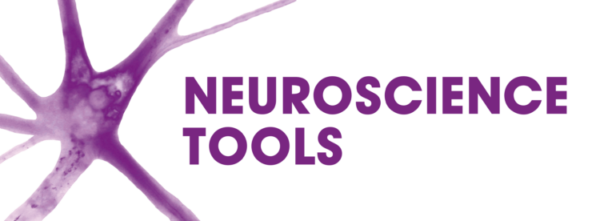NeuroCHIMERA™ TBI Instrument Accessory
The NeuroCHIMERA™ TBI Instrument enables impacts on an unrestrained head to model naturally occurring head impacts. Impact angle, usually skull-flat, is set with a lock knob and hinge. Requires a Neuropactor™ actuator to make the impact.
Purpose
The pneumatic CHIMERA TBI Instrument (Namjoshi et.al., 2014) is designed to model naturally occurring head impacts where the head is usually free to move. Some of the functional loss is usually attributed to the abrupt movement. Neuroscience Tools offers an accessory table using the NeuroPactor™ actuator to deliver electromagnetic impacts to a Chimera table we manufacture, our Neuro CHIMERA™ TBI Instrument.
In contrast, the NeuroPactor™ remote actuator is mounted on a stereotaxic instrument to optimize reproducibility. Impacts can be placed with stereotaxic precision at the same location on each head and at the same velocity, dwell time, maximum depth, and approach angle. Since the CHIMERA TBI Instrument does not restrain the head in a position, impacts cannot be as precisely placed. The experimental question being asked guides selection of which instrument to use.
NeuroPactor™ TBI instrument and CHIMERA TBI Instrument have in common that a metal tip impacts an anesthetized animal on the dorsal surface of the head at a preset velocity to create TBI. The important difference is not the tip driver, but the stand. The NeuroPactor™ was designed to mount on a stereotaxic instrument for precise impact placement, while the CHIMERA TBI Instrument enables impacts from below on the head of an animal lying on its back, strapped to the table at the chest, with room for the head to bounce away from the impact.
Neuroscience Tools™ manufactures a CHIMERA TBI Instrument type table (NeuroCHIMERA™ TBI Instrument) as an accessory to the NeuroPactor™. The same remote actuator may be interchangeably mounted on a stereotaxic instrument, or on the underside of the NeuroChimera™ TBI Instrument Table, impacting through a hole. Since the identical impact driver and tip can be used, a study comparing fixed head CHI and CHIMERA type CHI is convenient. Which parts of the after effects are due to head movement should be discernable.
Features of the NeuroCHIMERA™:
- Surgery-free: closed head (CHI).
- Non-surgical repeated impacts, as rTBI, a model of sports injury.
- Human accidents usually involve unrestrained head movement.
- Brain tissue is not impacted or cut, but concussed internally.
- Assessment shortly after impact, no time for healing needed.
- Faster throughput without surgery. ~10 min. /animal.
Additionally, the NeuroCHIMERA™ TBI Instrument Table manufactured by Neuroscience Tools™ features a precise digital readout of the head angle, which the user is to adjust until the head appears flat over the hole the probe will come through. Straps for both mice and rats are provided. One knob loosens or locks the angle. No electric air pump is required to fill a tank before an impact. No condensation from compressed air in the system.
* Namjoshi, D.R., Cheng, W.H., McInnes, K.A. et al. Merging pathology with biomechanics using CHIMERA (Closed-Head Impact Model of Engineered Rotational Acceleration): a novel, surgery-free model of traumatic brain injury. Mol Neurodegeneration 9, 55 (2014). https://doi.org/10.1186/1750-1326-9-5
NeuroCHIMERA™ TBI Instrument Accessory
$5,800.00

